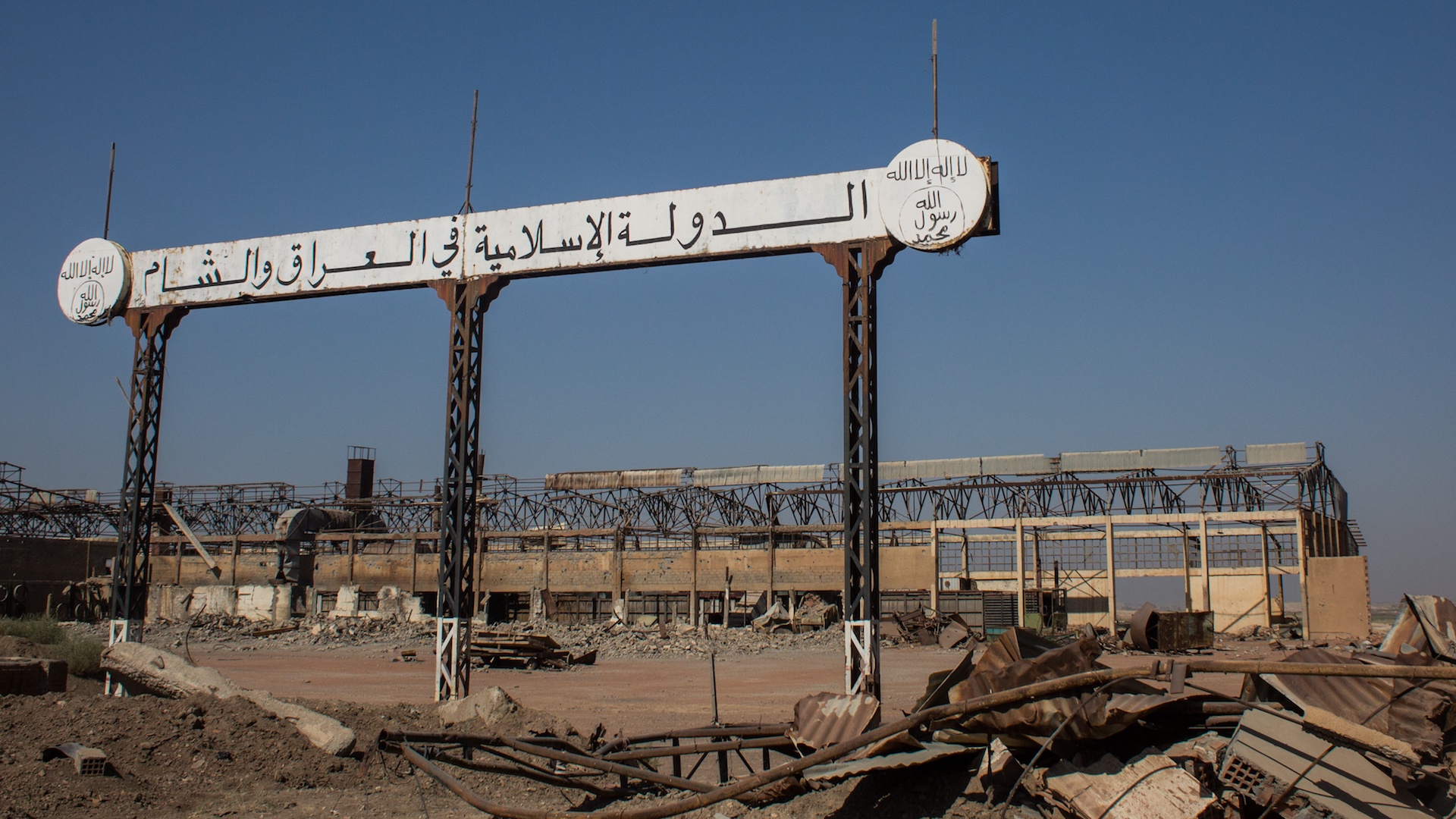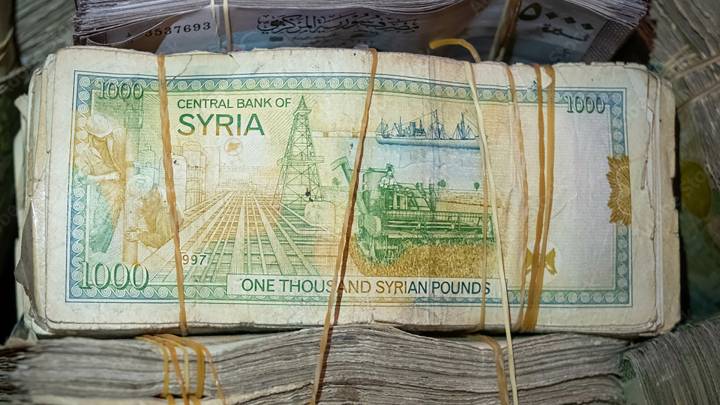The Islamic State is militarily on its knees. But it is striving for an ideological relaunch.
At the end of September, Islamic State leader Abu Bakr al-Baghdadi sent a message to his supporters. “Our lord is our sole guide and support,” he said in his most recent audio message to date. Sent via the so-called Islamic State’s official media agency, al-Furqan, it conveyed a sense of loneliness in the face of overwhelming opposition. As 2017 comes to an end, the Islamic State has lost most of the urban centres that it once controlled, such as Ramadi and Mosul in Iraq and, more recently, Syrian stronghold Raqqa. These losses have not come out of the blue for the organisation, which has been racked by internal debates on both ideology and military strategy.
In his message, al-Baghdadi focused on the core concepts of the Islamic State’s ideology, namely countering the two-pronged attack on Islam and umma, the true Muslim identity. It seeks to defend itself on the one hand from the “Western colonial crusade” to eradicate Islam, and on the other from the Iranian, Shia expansionism aimed at subjugating Sunnis and/or converting them.
Defeating the Islamic State is simply winning a battle; ending it requires eliminating the conditions that gave rise to the organisation
Islamic State ideology revolves around the notion of a single Islamic state which serves as a shield to protect Sunnis from attack. Two historic enemies have been highlighted by al-Baghdadi: the “polytheistic, Christian” West and “heretical” Shi’ism. The earthly battlefield of this cosmic struggle between good and evil is Iraq and Syria. In the context of this fight, the West is viewed as a conniving agent that undermines Sunni authority and hegemony and thus allows Iran to infiltrate the state and take control.
Arab or Muslim states are viewed as unsuitable defenders of umma, as they have either accepted the secular ideas of the West and its non-Islamic form of government, or have formed alliances with the West against other Muslims. A special place is always reserved for Saudi Arabia in Islamic State ideology, which views it as an “imposter” which claims to champion the Sunni cause but is a “puppet” of the West.
The events of the last two decades have helped crystallise the ideology of Sunni victimhood. The American invasion of Iraq launched a project of state- and nation-building which started with a massive purge of the cadres of the ruling Ba’ath party – de-Ba’athification – followed by a system of sectarian quotas which favoured the Shia sect. This dismantled the majority Sunni state apparatus and left half a million members of the Iraqi military and intelligence services unemployed.
The Sunnification of the Iraqi state under former Iraqi president Saddam Hussein, which started after the Gulf War in 1991, was replaced after the American invasion in 2003 by an equally sectarian system that favoured Shia. This process, intentionally or not, replaced the old Shia victimology with a Sunni one, and thus played into the hands of al-Qaeda.
Unemployed Sunni ex-officers joined forces with the Jordanian Abu Musab al-Zarqawi to form the Islamic State in Mesopotamia, a parallel state for Sunnis that mainly operated in the so-called Sunni triangle east of Baghdad. The group emerged as a new type of terrorist organisation that recruited members by using its professional bureaucratic and military skills and adhered to an ideology whereby Sunni nationalism went hand-in-hand with a sense of victimhood based on theories of international conspiracy.
By 2011 at the latest, events in Syria had produced an environment that mimicked the situation in Iraq, namely a Shia-dominated state that targeted Sunni communities under its rule. It was a logical step for al-Qaeda and the Islamic State in Mesopotamia to relaunch operations in Syria; the latter separated from al-Qaeda and morphed into the Islamic State in Iraq and Syria.
In his message, al-Baghdadi also outlined what the future tactics of the Islamic State could look like. He called on “soldiers of Islam and supporters of the Caliphate everywhere in the world”, urging them to “intensify the blows; make among your targets the media centres of the infidels and their houses of intellectual war; who [among you targets] the scholars of immorality, the preachers of evil and sedition, so continue your Jihad and your blessed operations”.
Far from classic state-run military campaigns, al-Baghdadi is aware that times have changed when he calls for a switch in tactics and a regression to guerrilla warfare. His comments mark the first time that a Jihadi leader has singled out media centres and think tanks as targets. This is, however, in tune with the concept of the war of identity with the West that Islamic State has adopted as a centre-piece of its ideology.
Al-Baghdadi’s message implicitly acknowledges that the state project has failed and reverts to an old mode of operation: a secret organisation, bound by ideology, unleashes war on its enemies through a network of small terrorist groups. Its chances are best in areas characterised by a weak state and a sympathetic population. It was to be expected that the Islamic State would retreat to its birth place, the Sunni triangle in Iraq, in order to launch operations against its enemies in Iraq and Syria.
In its bid to form a state, the Islamic State has repressed local Sunni actors. That is no longer necessary. A regression to the old Jihadi models of terrorist attacks or guerrilla warfare would re-galvanise support among local Sunni populations. It would not be difficult for the Islamic State to rebrand its new tactics as a war of liberation of Sunnis from the Christian West and Shia Iran, while it waits for another opportunity to relaunch the state project.
Defeating the Islamic State is simply winning a battle; ending it requires eliminating the conditions that gave rise to the organisation. These include failed Middle-East states and the rise of Iranian imperialism in the form of a Shia takeover of the state apparatus in neighbouring Sunni-majority countries. In the absence of the international community’s will to tackle these two pressing issues, ending the Islamic State remains wishful thinking. This is shown by how easy it was to take over the Sunni city of Mosul in June 2014, and the difficulty with which the Iraqi army took it back two years later.
A small number of lightly equipped Islamic State fighters chased away thousands of heavily equipped regular Iraqi soldiers within several days. Back then, the loss of Mosul was not considered the defeat of the Iraqi state but rather a defeat of Shiism. That prompted a call for a holy Jihad by top Shia clerics in Iraq, which triggered the popular mobilisation of an Iranian-supported Shia paramilitary militia that later helped the regular army retake the city.
After two years of preparation, it was not the regular Iraqi army that dislodged the Islamic State and retook Mosul, but a large coalition of American jet fighters, Iranian forces, contingents of the Kurdish Peshmerga, the Popular Mobilization militia and large sections of the regular Iraqi army. These forces were preceded by lengthy aerial and artillery bombardment campaigns that left the city in ruins.
For that reason, the defeat of the Islamic State in Mosul and Raqqa is unlikely to spell the end of the group. The deaths of Osama Bin Laden and al-Zarqawi did not end the organisations they created, but rather fuelled a new generation of international Jihadi organisations. It is highly likely that defeating fifty thousand fighters in Mosul and Raqqa will disperse them and spawn terrorist cells in the West and around the world.
Moves to tackle extremism must start with the political context that produces it, namely marginalisation and exclusion. The Sunnis of Iraq must be given access to the state and its resources. The ten million Sunni refugees and internally displaced in Syria must also be given justice against the oppression and political marginalisation perpetrated by the Iran-supported Assad regime. Speaking in less sectarian terms, the people of the Middle East must be given a chance to rid themselves of the brutal entrenched dictatorships governing them for more than half a century.
The Arab Spring offered a chance for just that. A peaceful transition to democracy would have undermined the basic premise of international Jihadism, namely that any change in the Middle East is impossible without violence. Seven years later, disappointment is running high. The rise of Jihadists and non-state actors is not the only trend. There is also a tendency to revert to supporting dictatorial regimes in the name of international stability, ignoring the fact that these regimes are responsible for creating the dynamics that led to the rise of the Islamic State in the first place.




